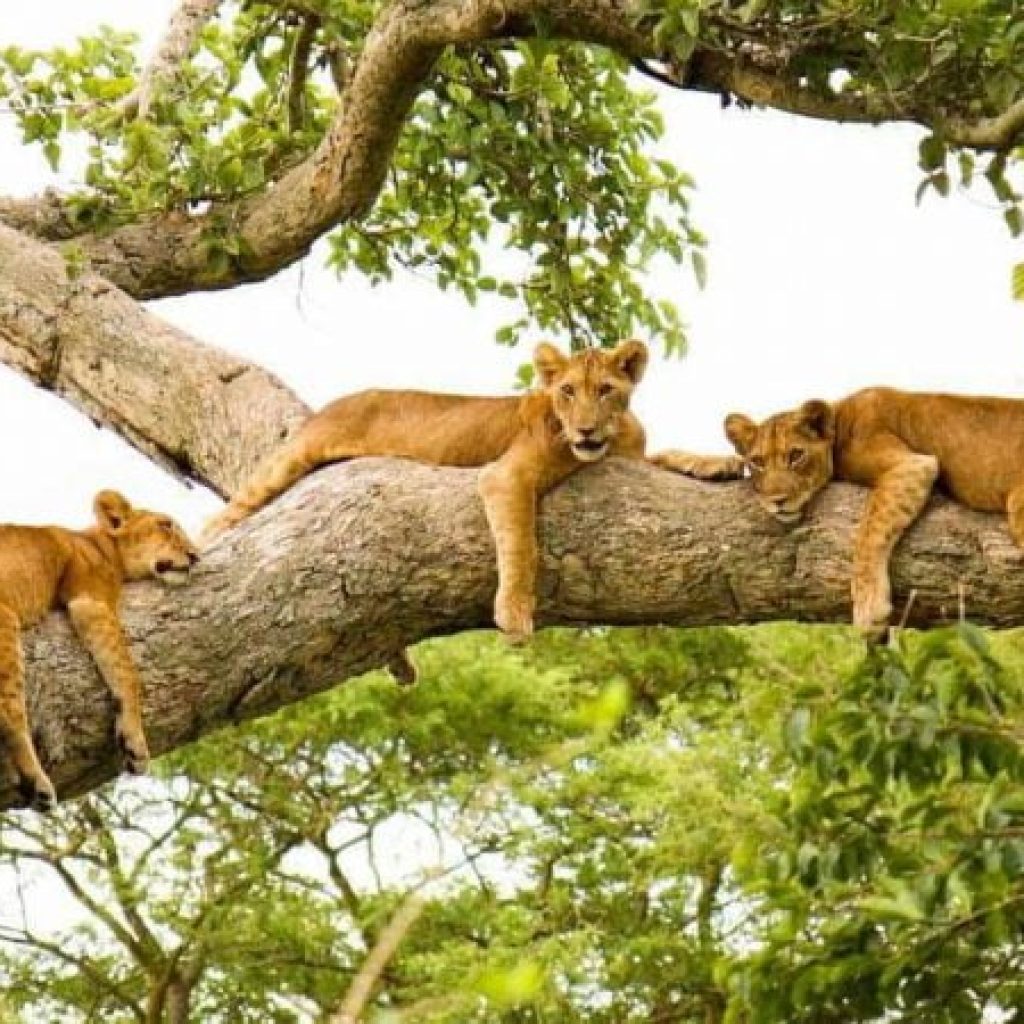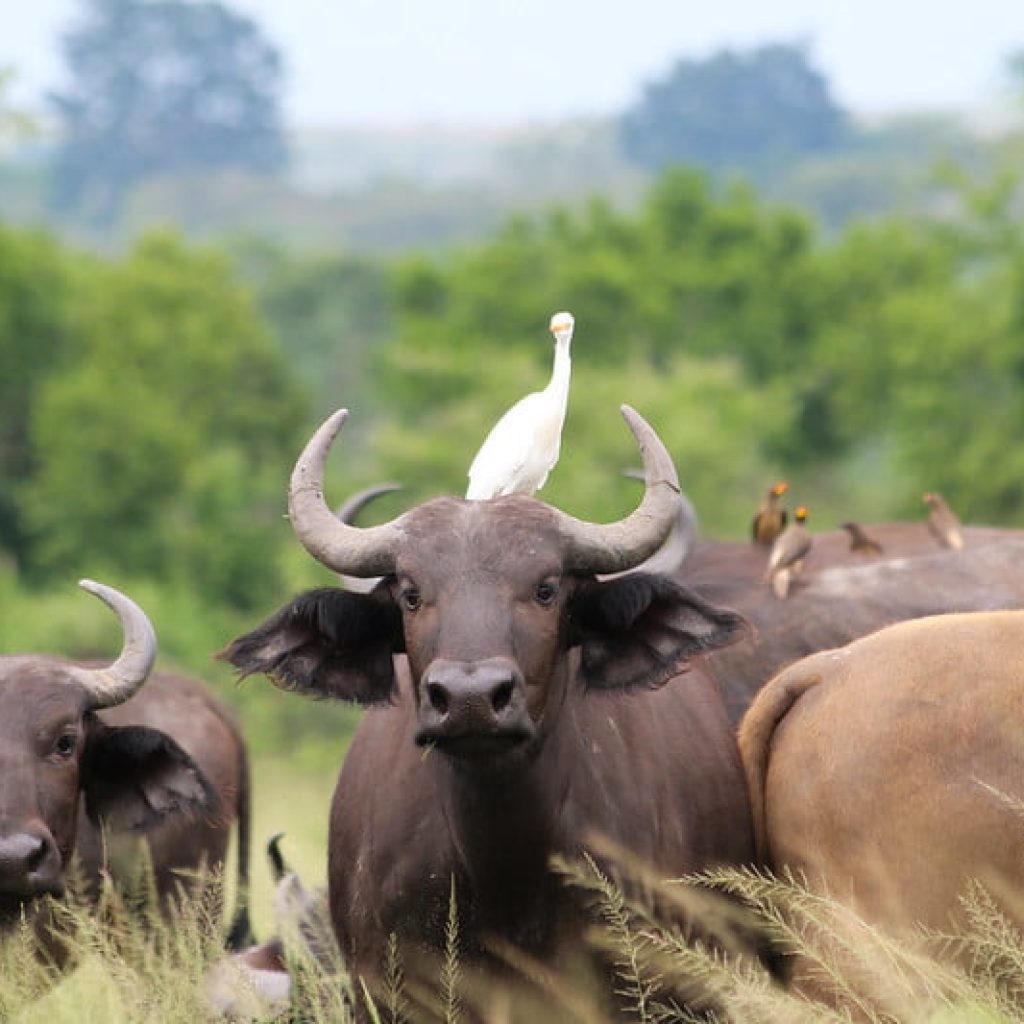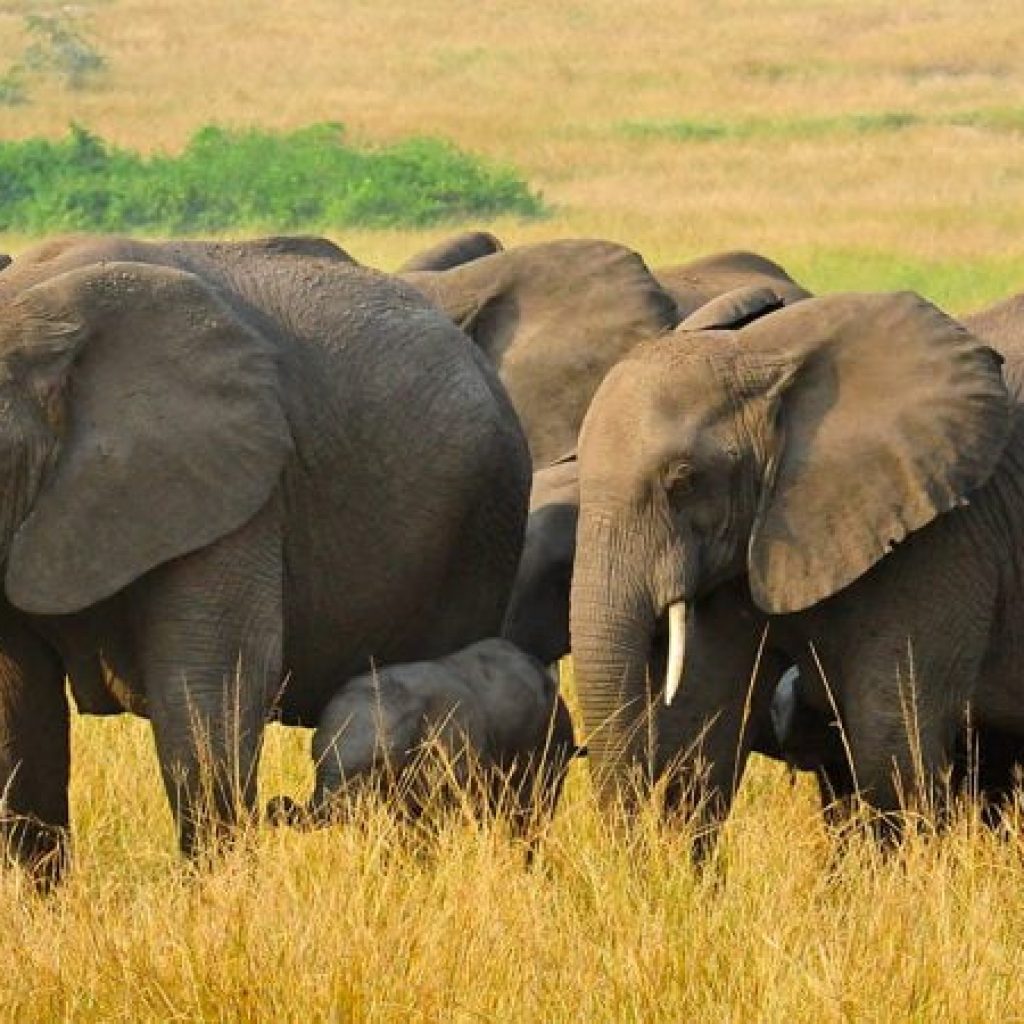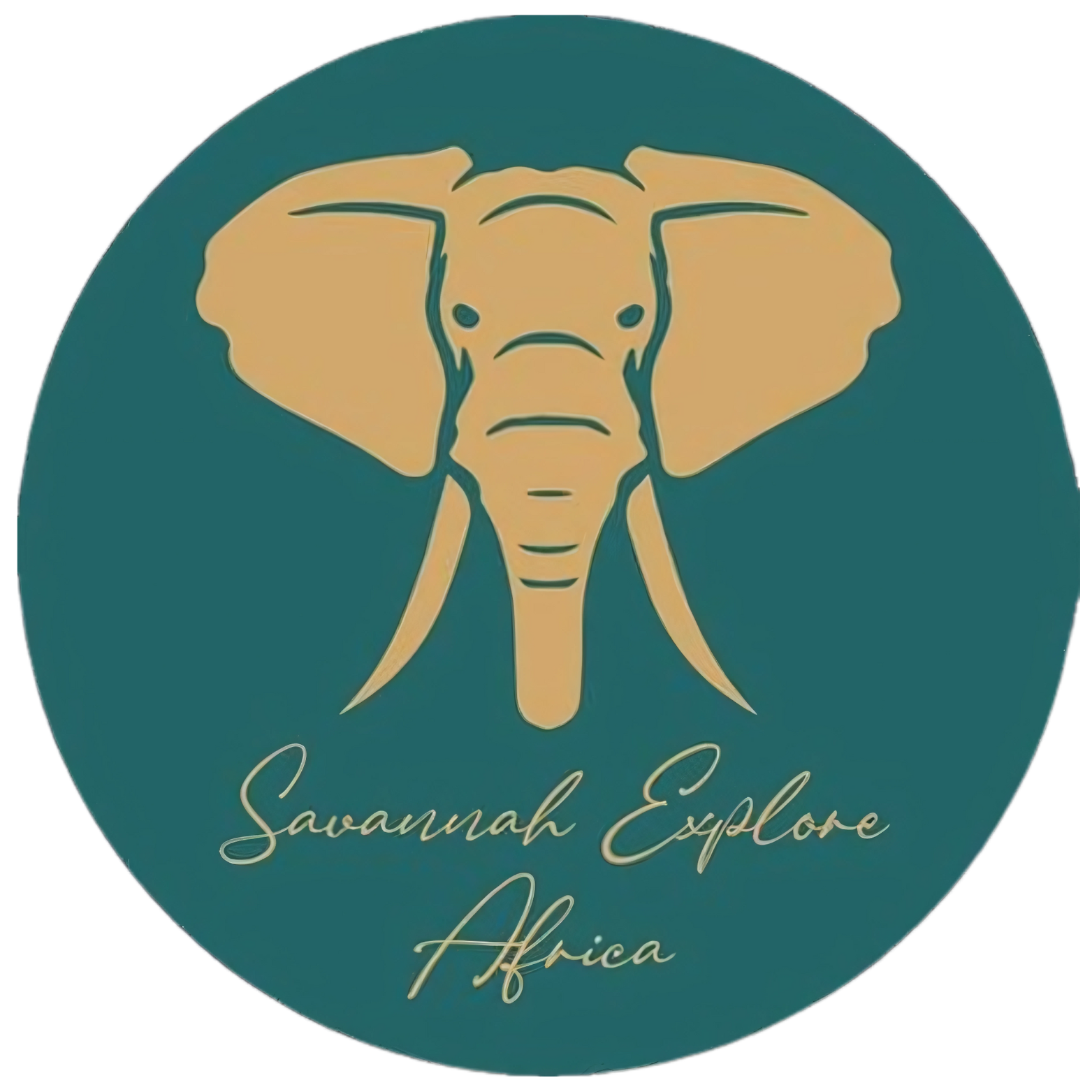Queen Elizabeth National Park
Named after Her Majesty Queen Elizabeth II of England, Queen Elizabeth National Park is one of most popular game parks for safari trips in Uganda. It is one of the prime tourist destinations for big game viewing and birdwatching safaris in Uganda. Queen Elizabeth National Park is situated in the southwestern part of Uganda, adjacent to the border of the Democratic Republic of the Congo. It stands as Uganda’s most frequently visited national park, and many tourists often combine their visit here with trips to Murchison Falls National Park or gorilla trekking.
This national park encompasses the Maramagambo Forest area and shares its borders with Kyambura Game Reserve, Kigezi Game Reserve, and Kibale National Park in Uganda. Additionally, it shares a border with the Virunga National Park in the DRC, as mentioned earlier. Covering an expanse of 764 square miles (1,978 sq km), Queen Elizabeth National Park extends from Lake Edward in the south to Lake George in the north, with the two lakes connected by the Kazinga Channel. The park’s elevation varies from 2,985 to 4,560 feet (910 to 1,390 m) above sea level.


The park boasts diverse ecosystems, featuring Acacia savanna, tropical high forests, salt lakes, savanna grasslands, tundra, and wetlands. Notably, the lakes are partially saline, with Lake George and Lake Edward being the most famous ones. The striking Rwenzori Mountains serve as a dramatic backdrop, with picturesque craters nestled in the foothills beneath the mountains. Visitors can enjoy panoramic views over the Kazinga Channel and the surrounding plains. The riverbanks are frequented by buffalo, elephants, and other ungulates. Hippopotamuses populate the river waters, while crocodiles can often be seen basking on the sandy shorelines. The densely forested areas provide ideal hiding spots for lions and leopards, patiently waiting for unsuspecting prey to approach for a drink.
While the national park is undoubtedly a sought-after destination for wildlife enthusiasts, it also treats visitors to visually stunning landscapes characterized by volcanic cones, craters, and crater lakes. Among the most cherished wildlife species here are lions, buffaloes, leopards, elephants, chimpanzees, hippos, and crocodiles. The park is also home to a remarkable array of over 95 mammalian species and more than 600 bird species. With its rich diversity of birdlife, Queen Elizabeth National Park has rightfully earned its reputation as a birdwatcher’s paradise.
Activities in Queen Elizabeth National Park
The Kasenyi savanna plains are located in the north of Queen Elizabeth National Park. They support plenty of animals and are the main animal viewing grounds during the safari. The Kasenyi plains are also the breeding ground of herds of Uganda Kob. The predators like the Lions and Hyena can be spotted hunting from among plenty of Antelopes including Orib, Kob. Large herds of Elephants and Buffaloes can be seen roaming the open plains and congregating around the lakes.
The salt mines of Lake Katwe have provided salt to the region for centuries. As has been for ages, the salt is extracted manually with hands. One of the activities on the safari in Queen Elizabeth National Park is taking a tour of the salt mines and interact with the mining community.
The stunning Kyambura Gorge lies in the western part of the park. It is about 100 meters deep and supports a lush forest and streams of waters. The Kyambura Gorge forest also referred the “underground forest” harbors a small population of about 20 Chimpanzees which has been habituated for one of the Chimp trekking tours in Uganda. Other primates such as Baboons, and Black-and-white Colobus, and many forest birds can be observed in the forest.
Kazinga Channel is a natural stream of water 32km long that connects Lakes Edward and George. The channel harbors plenty of wildlife. An afternoon boat ride on the Kazinga Channel is a highlight of the safari in Queen Elizabeth National Park that rewards with wonderful sightings of Hippos, Crocodiles, Monitor Lizards, Elephants, Buffaloes and Antelopes
The channel is a birdwatcher’s paradise! Hundreds of water species congregate along the banks of the Kazinga Channel. It is the best place to catch the African Fish Eagle in action, and the African Skimmer doing the skimming on the water for fish.
The southern area of Queen Elizabeth National Park called Ishasha is popular for the unusual Tree Climbing Lions. These are not a distinct species of lions but lions in this area have adapted to climbing the tree figs especially after the morning hunt to spend the hot afternoon chilling up and catch the cool breeze, and also escape the tsetse flies and other nasty bags on ground.
Lodging Experiences
Luxury:
Mweya Safari Lodge, Katara Lodge, Kyambura Gorge Lodge, Ishasha Wilderness Camp
Mid-range:
Kingfisher Lodge, Ihamba Lodge, Kasenyi Safari Camp, Marafiki Safari Lodge
Budget:
The Bush Lodge, Simba Safari Camp, Pumba Safari Cottages – Kyambura
Getting to Queen Elizabeth National Park is relatively straightforward, and there are several transportation options to choose from, depending on your preferences and budget.

How To Get To the National Park
The quickest way to reach Queen Elizabeth National Park is by taking a flight from Entebbe International Airport or another major airport in Uganda to one of the nearby airstrips. The most convenient airstrip is the Kasese Airstrip, which is located close to the park.
Several domestic airlines in Uganda operate flights to Kasese. The flight offers not only convenience but also scenic views of the landscape.
The salt mines of Lake Katwe have provided salt to the region for centuries. As has been for ages, the salt is extracted manually with hands. One of the activities on the safari in Queen Elizabeth National Park is taking a tour of the salt mines and interact with the mining community.
Another option is to book a guided safari tour. Savannah Explore Africa offers package tours to Queen Elizabeth National Park, including transportation, accommodation, and guided activities within the park. This is a convenient way to explore the park while leaving the logistics to professionals.
If you prefer to travel by road, you can drive to Queen Elizabeth National Park from various locations in Uganda.
From Kampala (Uganda’s capital city), it’s a drive of approximately 7 hours to the park. The roads are generally well-paved and in good condition, providing a comfortable journey.
You can rent a car or hire a private driver for the trip. Ensure you have a map or GPS navigation to guide you.
If you’re already in Uganda and want a unique experience, you can also access Queen Elizabeth National Park via a boat safari on the Kazinga Channel. This is a scenic and enjoyable way to enter the park, observing wildlife and birdlife along the way.
Best Time To visit Queen Elizabeth National Park
These are typically considered the best times to visit Queen Elizabeth National Park. During these periods, the weather is generally dry, and the park’s wildlife is easier to spot because animals tend to gather around water sources. The vegetation is also less dense, enhancing visibility. June to August is often considered the peak tourist season.
Kazinga Channel is a natural stream of water 32km long that connects Lakes Edward and George. The channel harbors plenty of wildlife. An afternoon boat ride on the Kazinga Channel is a highlight of the safari in Queen Elizabeth National Park that rewards with wonderful sightings of Hippos, Crocodiles, Monitor Lizards, Elephants, Buffaloes and Antelopes
The channel is a birdwatcher’s paradise! Hundreds of water species congregate along the banks of the Kazinga Channel. It is the best place to catch the African Fish Eagle in action, and the African Skimmer doing the skimming on the water for fish.
Procedures To Ensure safety
It’s advisable to hire qualified guides when exploring the park. They are knowledgeable about the park’s wildlife, terrain, and safety protocols. They will also ensure you have a safe and informative experience.
If you’re self-driving, ensure your vehicle is in good condition. 4×4 vehicles are recommended for the sometimes rough roads within the park. Carry a spare tire, basic tools, and emergency supplies.
Queen Elizabeth National Park is in a region where certain diseases like malaria are prevalent. Take appropriate health precautions, including antimalarial medications and mosquito repellent.
During boat safaris on the Kazinga Channel, follow the instructions of the boat crew. Always wear a life jacket, and be cautious when leaning over the edge of the boat.
Have access to emergency contact information for the park rangers, the nearest health facility, and your country’s embassy or consulate in Uganda.
Be prepared for changing weather conditions, especially if visiting during the wet season. Carry appropriate clothing and gear for rain or cold.
Before entering the park, you’ll need to pay an entrance fee and any additional fees for specific activities like game drives, boat safaris, or chimpanzee tracking. Make sure to obtain the necessary permits and follow park regulations.
Always maintain a safe distance from wildlife. Do not feed the animals, and never approach them on foot. Follow your guide’s instructions when on a game drive.
Always maintain a safe distance from wildlife. Do not feed the animals, and never approach them on foot. Follow your guide’s instructions when on a game drive.
Always maintain a safe distance from wildlife. Do not feed the animals, and never approach them on foot. Follow your guide’s instructions when on a game drive.
If you’re going chimpanzee tracking, wear appropriate clothing and follow safety guidelines. Maintain a respectful distance from the chimpanzees to minimize disease transmission risks.
Choose accommodations that prioritize safety and security. Many lodges in and around the park have measures in place to keep guests safe from wildlife encounters.
Respect the park’s rules about waste disposal and environmental conservation. Leave no trace, and avoid littering
By following these safety procedures and being respectful of the park’s rules, you can enjoy a memorable and secure visit to Queen Elizabeth National Park while minimizing risks to yourself and the wildlife.
Remember to check the current road and weather conditions when planning your trip, as they can vary, especially during the rainy season. Additionally, it’s a good idea to book accommodations in advance, as Queen Elizabeth National Park is a popular destination, and lodging can fill up quickly, especially during peak tourist seasons
Trending Safaris
Tailor-made itineraries
for every traveller
We’re excited to take you on a journey to experience sights and sounds found nowhere else on Earth. Unique scenery, wildlife and cultures are waiting to be revealed, and we at Savannah Explore Africa can’t wait to share them with you. Our custom designed journeys are intended to inspire but can be tailor made to suit your every need. It’s time tolet your safari dreams run wild.
Let Us Plan Your Dream African Trip


Enquire now and a Travel Expert will get
back to you.
Subscribe to Our Newsletter
Join Our Monthly Newsletter, stay in touch and travel when ready
